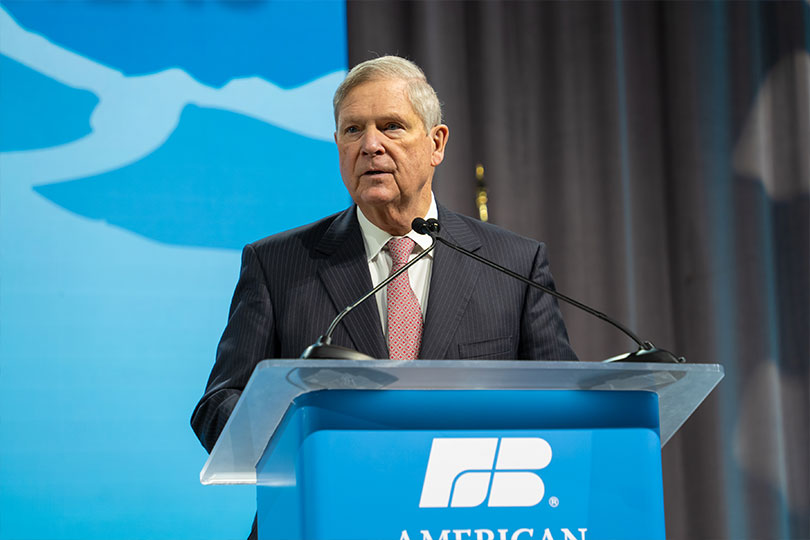By Julie Tomascik
Editor
Diversifying income streams and protecting the country’s natural resources can go hand-in-hand, U.S. Secretary of Agriculture Tom Vilsack said during his address at the American Farm Bureau Federation’s Annual Convention.
“There’s an exciting opportunity for you to be entrepreneurial, for you to be engaged in sustainable practices and be rewarded for it, for you to access local markets and be able to be paid more for it to reduce your costs, to create new renewable energy and less expensive energy, not just for your farming operation, but for everybody in the area,” he said.
He noted 141 projects involving over 100 major commodities and 205 sustainability practices are underway in 50 states.
Farmers and ranchers can participate in voluntary, market-based incentive programs for sustainability efforts. But by participating in the programs, Vilsack said farmers are helping share successful sustainability stories, too.
“It’s also the ability to measure and monitor and verify the results of those practices and be able to utilize them in market opportunities through carbon markets and other environmental markets that are designed for farmers creating a whole new source of income for farming operations,” he said.
Despite decades of farm bill programming to help keep farmers on the land and new opportunities for new energy-related markets, America has seen a significant loss of farmland.
Since 1981, Vilsack said the U.S. has lost 437,300 farms and 141 million acres of farmland.
“That’s the landmass of Florida, Georgia, South Carolina, North Carolina and Maryland,” he said. “I don’t think the country can stand a continued acceleration of the loss of small and mid-sized farming operations. We can do better. We can figure out ways in which large production agriculture can continue to flourish as it is important and necessary to meet the food demands, not just of the U.S. but of the world. But at the same time, we can also provide an entrepreneurial opportunity for that small and mid-sized operation.”
Vilsack also addressed an issue that’s been a concern of farmers—fertilizer production.
He announced more than $200 million in loans and grants to bolster domestic production of fertilizer and renewable energy.
The investments will be made through the Rural Energy for America Program and the Fertilizer Production Expansion Program. A total of 675 projects in 42 states, including Texas, will be financed.
“The investments announced will expand access to renewable energy infrastructure and increase domestic fertilizer production, all while creating good-paying jobs and saving people money on their energy costs that they can then invest back into their businesses and communities,” Vilsack said.


Leave A Comment